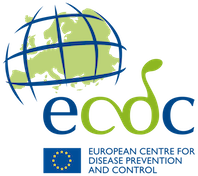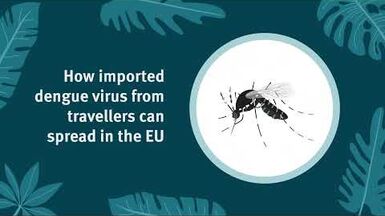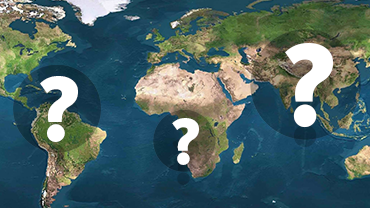Epidemiological update: Polio in Israel, 14 October 2013
As of 3 October, wild-type poliovirus 1 (WPV1) was still being isolated in wastewater treatment plants across the country with some areas indicating an inconsistent or discontinued detection. However, no new sites in Israel with WPV1 in sewage were detected since the start of the bivalent oral polio vaccine (bOPV) immunisation campaign, according to personal communication from the Ministry of Health in Israel.
Towns in which there is still wild poliovirus activity in wastewater treatment plants (showing a mild downward trend, but still with a significant presence): Rahat, Be'er Sheva, Tel Sheva, Kuseife, Shoket, Arara.• Towns in which there is inconsistent wild poliovirus activity in wastewater treatment plants, and the tests need to be regularly repeated in order to determine a clear trend: Jaljulye, Ramle, Qiryat Gat, Lod.• Towns in which the wild virus has disappeared from the sewerage, but due to erratic appearance, retesting needs to be performed: Jerusalem, Baqa Al-Gharbiyye and Iron.[1]
Event Background
In February 2013, WPV1 was first isolated from sewage samples collected for routine environmental surveillance in southern Israel.
WPV1 has subsequently been isolated in stool samples from 42 carriers (4.4% of the sampled population) tested in area of WPV1 circulation [2]. Forty of 42 were children from the age group of 0-9. They were reported to have been fully vaccinated with IPV, according to Israeli national recommendations [3].
The detection of WPV1 in wastewater treatment plants as well as the isolation of the virus in children fully vaccinated with IPV-containing vaccines triggered the launch of a supplementary immunisation campaign in August 2013 with a bivalent OPV vaccine (OPV 1 and 3) in order to interrupt WPV1 circulation and best protect the Israeli population [4]. The vaccination campaign started in parts of southern Israel during the week of 5 August and was expanded nationwide on 18 August.
The latest estimates of vaccination uptake indicate that more than 890 000 children up to the age of nine years have been vaccinated out of an estimated population of 1.2 million eligible bivalent OPV candidates in this age cohort (about 75% coverage). The vaccination campaign is still ongoing.
It is important to note that no clinical cases of paralytic polio have been reported to date. [A]
In addition to the vaccination campaign, the Israeli Ministry of Health is continuing its environmental sampling and routine active acute flaccid paralysis surveillance expanded to all age groups. Aseptic meningitis cases were screened for poliovirus early in the event, but this was terminated after onset of the bOPV campaign.
ECDC comments
On 26 September 2013, ECDC published a risk assessment in relation to WPV1 circulation in Israel in an attempt to assess the impact a similar public health event could represent for EU/EEA countries [5].
ECDC’s assessment concluded that there is the possibility that poliovirus may be imported and re-established in the EU/EEA. Furthermore, based on the limited information on existing surveillance systems in the EU, there is a risk that poliovirus circulation will go undetected if it is imported.
ECDC suggested recommendations for EU/EEA Member States were as follows:
Thorough assessment of polio vaccination uptake (in the general population and specific sub-groups), and strengthening of surveillance and laboratory capacity, should be a high priority.
- Environmental surveillance, enterovirus surveillance and other types of supplementary surveillance should be strengthened, and EU-level standards and performance indicators should be agreed.
- EU/EEA Member States should recommend that all travellers to areas where WPV circulates have an up-to-date polio vaccination status.
- Operational and contingency plans are needed in the EU/EEA to mobilise polio vaccine stockpiles in case of evidence of WPV transmission. The availability of poliovirus vaccines for use in the context of an outbreak should be assessed.
The current update provides more details on the environmental sampling carried out by the Israeli Ministry of Health and does not change the suggested recommendations
The World Health Organization (WHO) “estimates the risk of further international spread of wild poliovirus type 1 (WPV1) from Israel [is] to be high” due to the “increasing geographic extent of circulation over a prolonged period of time” [6]. One can estimate that as a result of the ongoing bOPV immunisation campaign in Israel, with a present coverage of 75%, this risk has decreased.
Polio was eliminated in the WHO European Region and the Region was certified polio-free in 2002.
To date, three countries remain endemic for indigenous transmission of wild poliovirus virus in the world: Afghanistan, Nigeria and Pakistan. In 2013, the Horn of Africa has been affected by an outbreak of wild poliovirus type 1 [7].
Footnote
A. WPV1 has also been detected from sewage samples collected by the occupied Palestinian territory authorities (where OPV + IPV is part of the immunization schedules) in two places in the West Bank and one adjacent to the Egyptian border in the Gaza strip. A supplementary immunisation campaign in the occupied Palestinian territory is planned to be conducted in November and December 2013 [6].
References
- State of Israel: Ministry of Health. Polio update 29 September 2013 [cited 15 October 2013]. Available from: http://www.health.gov.il/English/News_and_Events/Spokespersons_Messages/Pages/29092013_1.aspx
- State of Israel: Ministry of Health. Polio update 18 August 2013 [cited 15 October 2013]. Available from:http://www.health.gov.il/English/News_and_Events/Spokespersons_Messages/Pages/18082013_2.aspx.
- Personal communication from the Ministry of Health in Israel.
- State of Israel: Ministry of Health. Two drops for stopping polio campaign. Polio, public health, vaccination. Press release dated 4 August 2013 [cited 15 October 2013]. Available from:http://www.health.gov.il/English/News_and_Events/Spokespersons_Messages/Pages/04082013_1.aspx.
- European Centre for Disease Prevention and Control. Wild-type poliovirus 1 transmission in Israel – what is the risk for EU/EEA Stockholm: ECDC; 2013 [cited 15 October 2013]. Available from: http://ecdc.europa.eu/sites/portal/files/media/en/publications/Publications/polio-risk-assessment-transmission-in-Israel.pdf
- World Health Organization: Global Alert and Response (GAR). Poliovirus detected from environmental samples in Israel and West Bank and Gaza Strip [cited 15 October 2013].
- Global Polio Eradication Initiative. Polio this week: 9 October 2013 [cited 15 October 2013]. Available from:http://www.polioeradication.org/Dataandmonitoring/Poliothisweek.aspx





